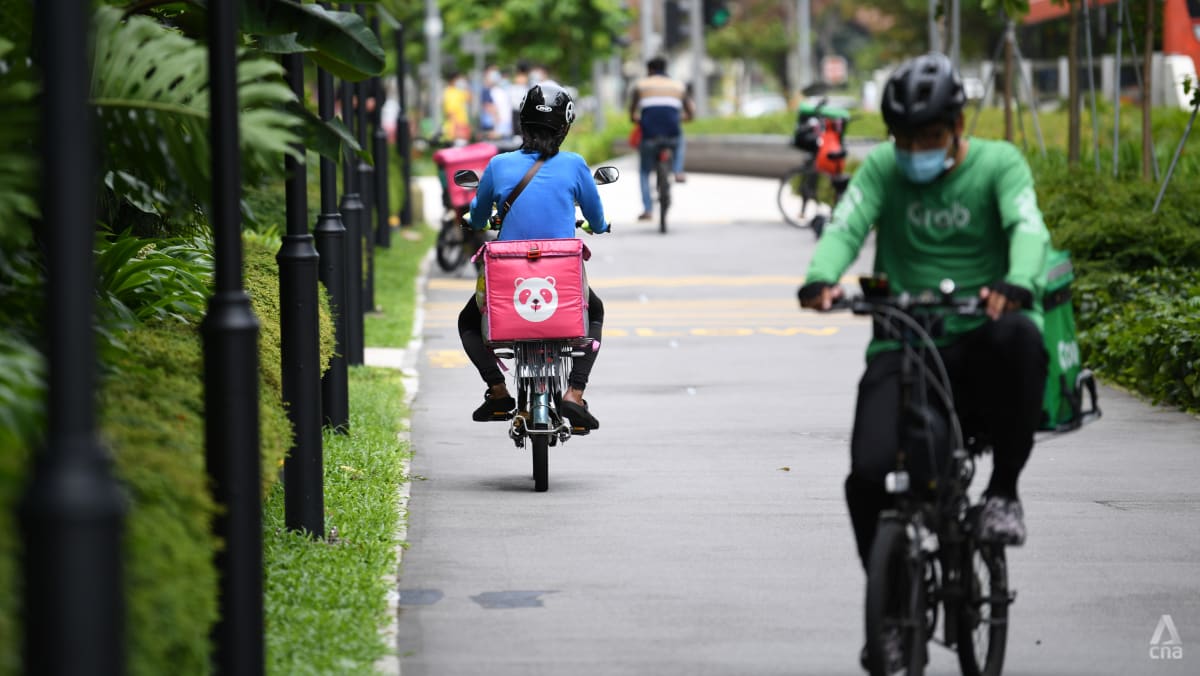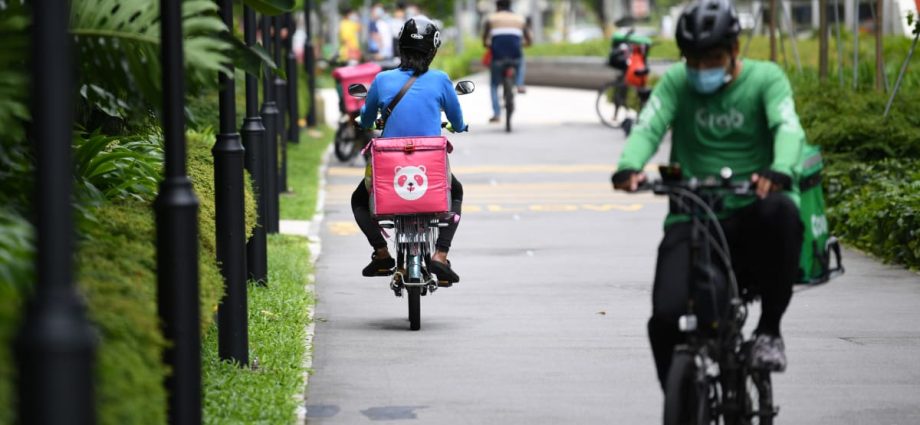
DELIVERY PLATFORMS RESPOND
In response to CNA’s queries, a Deliveroo spokesperson said the platform differentiates itself with the only subscription plan in Singapore that “offers truly free delivery on all orders”.
Mr Lawrence Wen, foodpanda’s CEO, told CNA that the company has seen its share of players enter and exit over its 10 years of operations in Singapore, and that foodpanda was “here for the long haul”.
He acknowledged that the company’s biggest challenge lies in changing consumer behaviours. Pre-pandemic, orders would peak at lunchtime and were concentrated at office areas.
With more people working from home, orders now come in around the island at different times, making it harder to anticipate demand and to ensure there are enough riders to fulfil orders, he said.
A Grab spokesperson noted that consumers wanted convenience but were also “increasingly price-conscious”. The company has rolled out a saver option where consumers can opt for lower delivery fees with longer delivery times, and a subscription programme with delivery discounts.
Oddle said it differentiates itself by focusing on the restaurant industry.
CEO Jonathan Lim described the three main platforms as a “marketplace” that aggregates menus from all the merchants and places them onto their own proprietary platforms. As a result, the platforms own the customer data and the merchants are reliant on them for insights, he said.
“We help merchants build their digital capabilities and when consumers use Oddle, they are really sent to the merchants’ own digital properties, where customer data can be easily assessed by the merchant.”
Restaurants with Oddle use delivery partners or their own delivery fleet for orders.
Mr Lim said Oddle’s primary challenge was in educating restaurants about the benefits of having their own platforms, instead of being subject to rising costs when delivery apps raise their fees.
HOPE FOR POTENTIAL RIVALS?
Existing competition in the sector makes it hard for new firms to muscle in, said analysts.
Prof Wirtz said a new player would have to “bribe” restaurants and customers with low fees and a wide array of food choices, and riders with the possibility of good earnings. Even then, simply being cheaper is not enough.
Established Singapore food delivery players have significant advantages in terms of scale and resources, it is difficult for new entrants to compete on their investments in the technological infrastructure, customer base, and rich past user data for optimal user experience
Key market players have established strong brand recognition and customer loyalty, making it tough to get customers to switch to a new platform, said SUSS’ Dr Chong.
“It is difficult for new entrants to compete on their investments in the technological infrastructure, customer base and rich past user data for optimal user experience,” she added.
Despite little room to manoeuvre in the market, new entrants could still carve out competitive advantages in niche areas, such as focusing on halal-certified or vegan diets, or on a specific geographical area, the academics said.
Assoc Prof Ng suggested returning to the basics – good service.
“Sometimes, the most obvious success factor is one that is easily overlooked. When we review online comments and research findings, it is apparent that food delivery can be a less-than-stellar experience.
“The problem points towards the companies’ failure to fulfil the basic service promise in a consistent manner,” she said, citing delayed deliveries, missing items and poor customer support as examples.
“If new entrants can reliably help solve consumers’ pain points quickly and straightforwardly, they may then win and retain consumer loyalty.”
Part-time rider Joshua Lim, who has delivered for the three main platforms but currently uses Grab and Deliveroo, said that he preferred Grab as he is able to cash out the moment his earnings hit S$50.
Most of his deliveries are via Grab, while he only uses Deliveroo once or twice a week.
“Grab’s orders come faster than Deliveroo for some reason, so I feel that Grab has higher demand for orders … based on what I see, Grab’s orders flow in faster,” the 22-year-old said.

